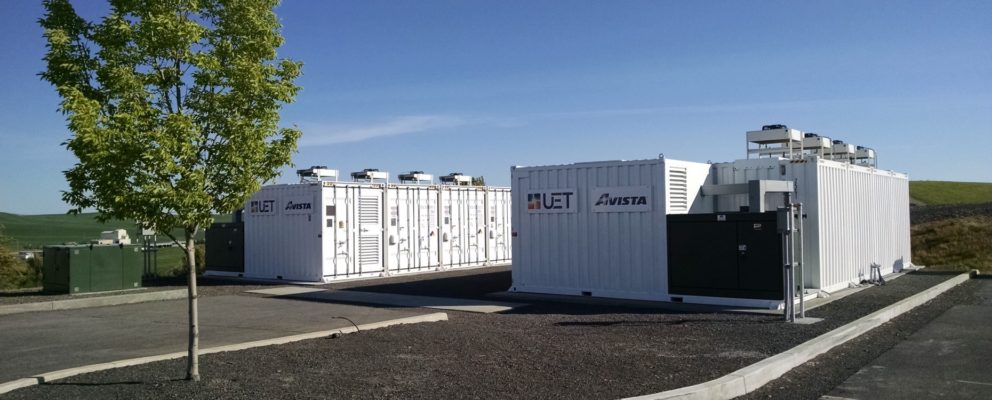CEnREP affiliate faculty among NC State Energy Storage Team to issue final report to North Carolina’s General Assembly.
The NC State Energy Storage Team, a research group consisting primarily of NCSU faculty and graduate students and including CEnREP affiliates Harrison Fell and
Christopher Galik, recently released their study titled “Energy Storage Options for North Carolina”. The study was prepared at the request of North Carolina’s state legislature under a provision in the state’s energy bill passed in the summer of 2017 (HB 589). The report covers a wide range of engineering, economic, and policy issues associated with energy storage.
The full NC State News press release, which includes access to the final report, is below.
A team of experts from NC State University and N.C. Central University has released a report detailing energy storage options that the North Carolina General Assembly (NCGA) can use to inform energy policy. The report has short- and long-term implications for both power grid and renewable energy development in North Carolina.
The report stems from language in House Bill 589, which was signed into law in July 2017. The legislation called for a study to “address how energy storage technologies may or may not provide value to North Carolina consumers based on factors that may include capital investment, value to the electric grid, net utility savings, net job creation, impact on consumer rates and service quality, or any other factors related to deploying one or more of these technologies. The study shall also address the feasibility of energy storage in North Carolina, including services energy storage can provide that are not being performed currently, the economic potential or impact of energy storage deployment in North Carolina, and the identification of existing policies and recommended policy changes that may be considered to address a statewide coordinated energy storage policy.”
The report was delegated to a team of more than a dozen experts, primarily based at NC State, and the final version was submitted to the NCGA on Dec. 3.
The expert panel drew on a wide range of research, and solicited stakeholder input, to assess the benefits and costs associated with a range of energy storage technologies – from lithium-ion batteries to pumped hydro.
“The stakeholder input process was important to capture the views of the more than 200 interested organizations and companies that participated at some level in our research discussions and had a desire to understand how storage could impact North Carolina’s energy future,” says Steve Kalland, executive director of the NC Clean Energy Technology Center at NC State.
In terms of costs, the panel evaluated each of the available technologies based on current data. However, given the rapid – and ongoing – decline in lithium-ion battery costs, the team also included projected costs for that technology in 2030.
The researchers also looked at a range of potential benefits associated with varying degrees of energy storage capacity.
“For example, in the moderate range of capacity, like the 300 megawatts of energy storage capacity Duke Energy has proposed to build over the next 15 years, power storage could offset the construction of a gas power plant,” says Jeremiah Johnson, a member of the energy storage team and an associate professor at NC State.
“At the high end, more than a gigawatt, you offset the need for multiple power plants – and potentially provide the infrastructure necessary to expand the development of renewable power sources, such as wind or solar,” Johnson says.
“But energy storage has value beyond its relevance to renewable energy,” says Joseph DeCarolis, also a member of the study team and an associate professor at NC State. “For example, power utilities have to balance electricity generation and consumer demand. Energy storage gives utilities a potentially more efficient way to do this, driving down costs.”
After completing their evaluation, the experts compiled a range of policy options that fall into three broad categories stakeholders and decision-makers may wish to consider:
- Prepare: these policies aim to help address potential gaps or areas of uncertainty that might otherwise hinder the deployment of cost-effective energy storage.
- Facilitate: these policies are focused on helping either increase the value or decrease the cost of energy storage in the near-term.
- Accelerate: these policies could substantially increase the pace of energy storage deployment in the state.
“Options within these three categories are not necessarily mutually exclusive,” says Christopher Galik, a member of the team and associate professor at NC State. “In fact, they could complement each other. Much would depend on the particular set of policies chosen, not to mention the details of how policies are designed and implemented.”
“We were fortunate to have access to a broad range of professionals with relevant expertise, and we made use of that expertise to compile a suite of options that gives policymakers what they need to make informed decisions,” DeCarolis says. “And we’re making our data and calculations available for public review.
“Because we offer a range of options, rather than championing any specific approach, proponents of any particular energy storage strategy may be dissatisfied. But our job was to outline the costs and benefits, opportunities and challenges, associated with energy storage. And that’s what we’ve done.”


